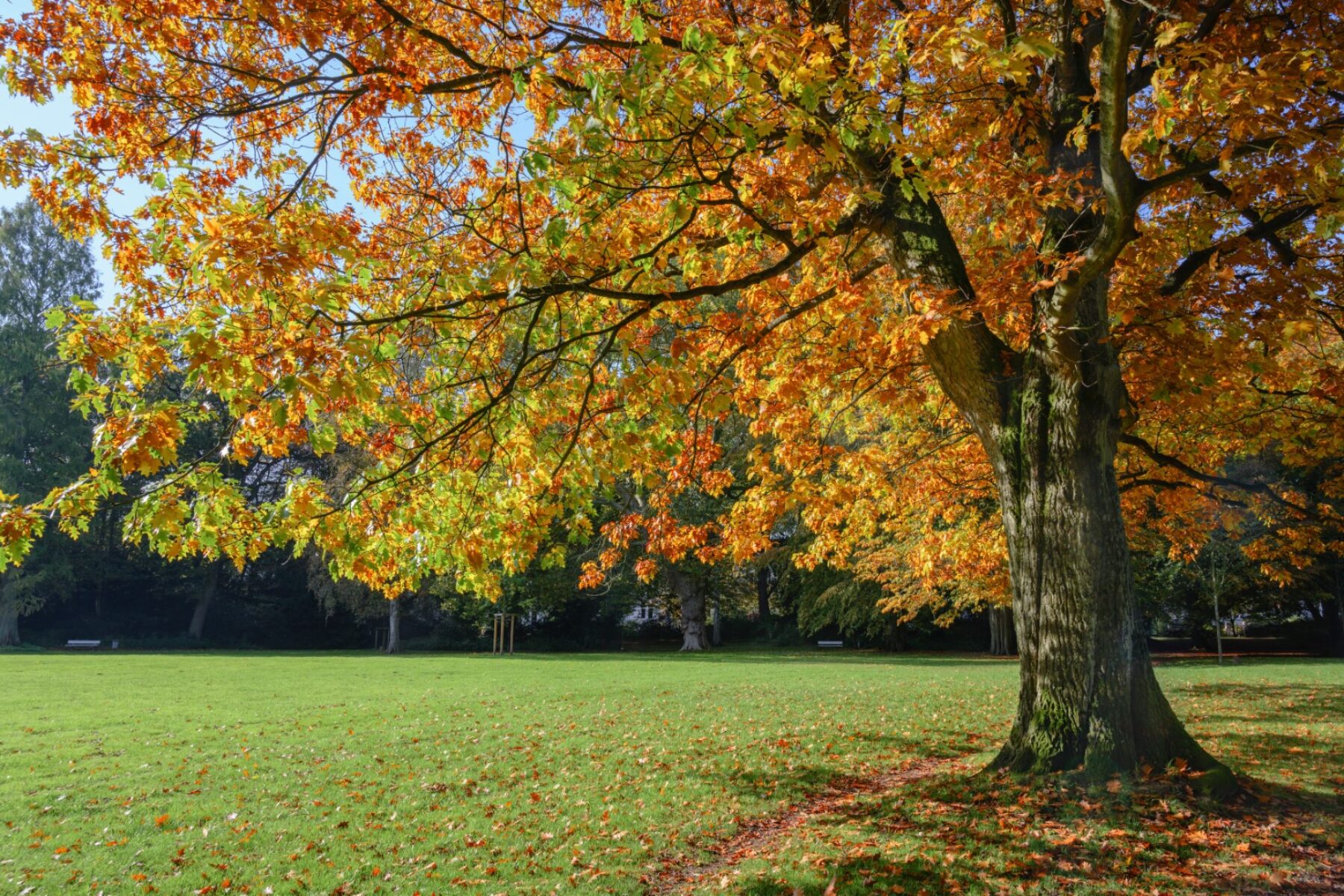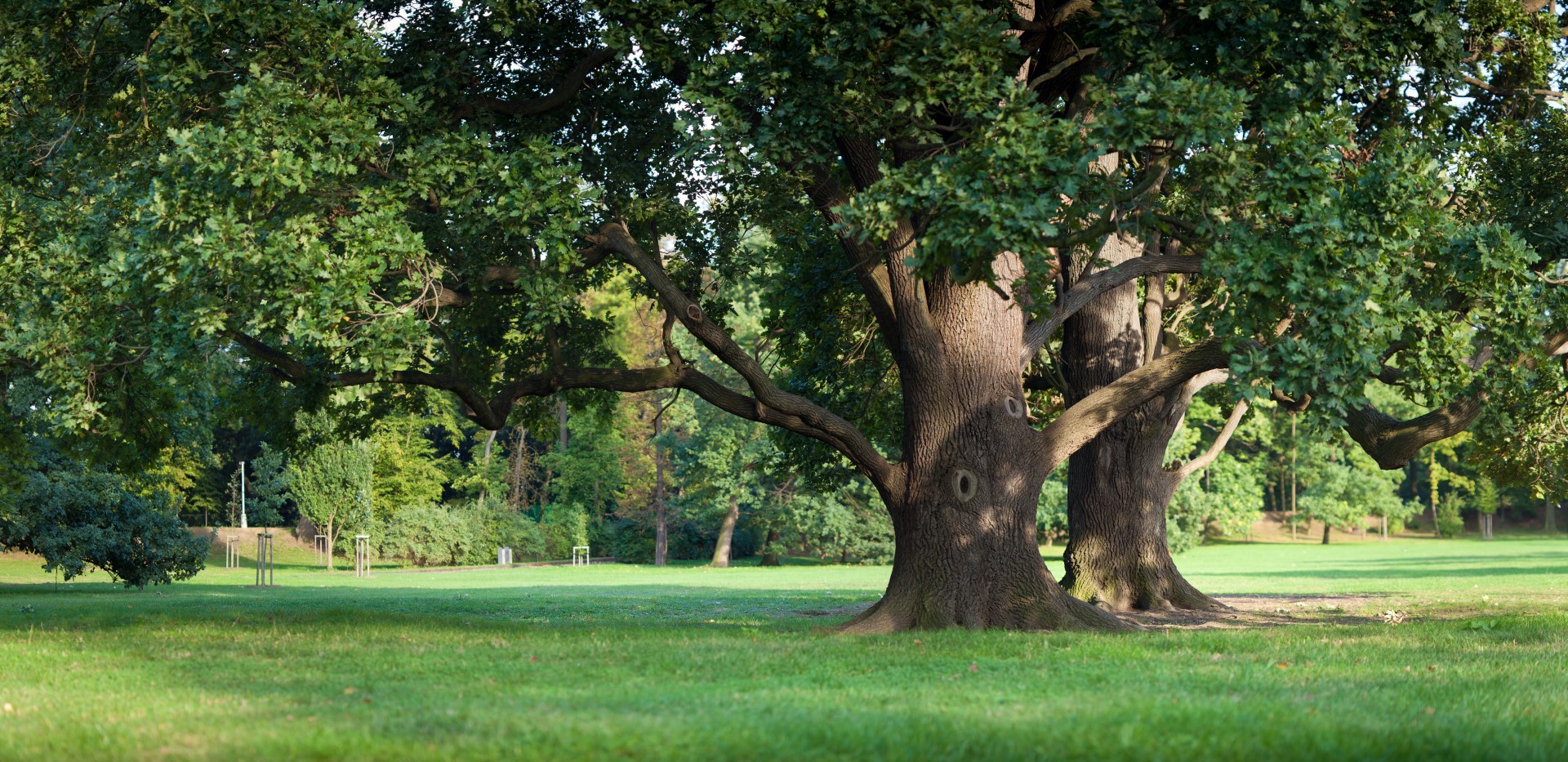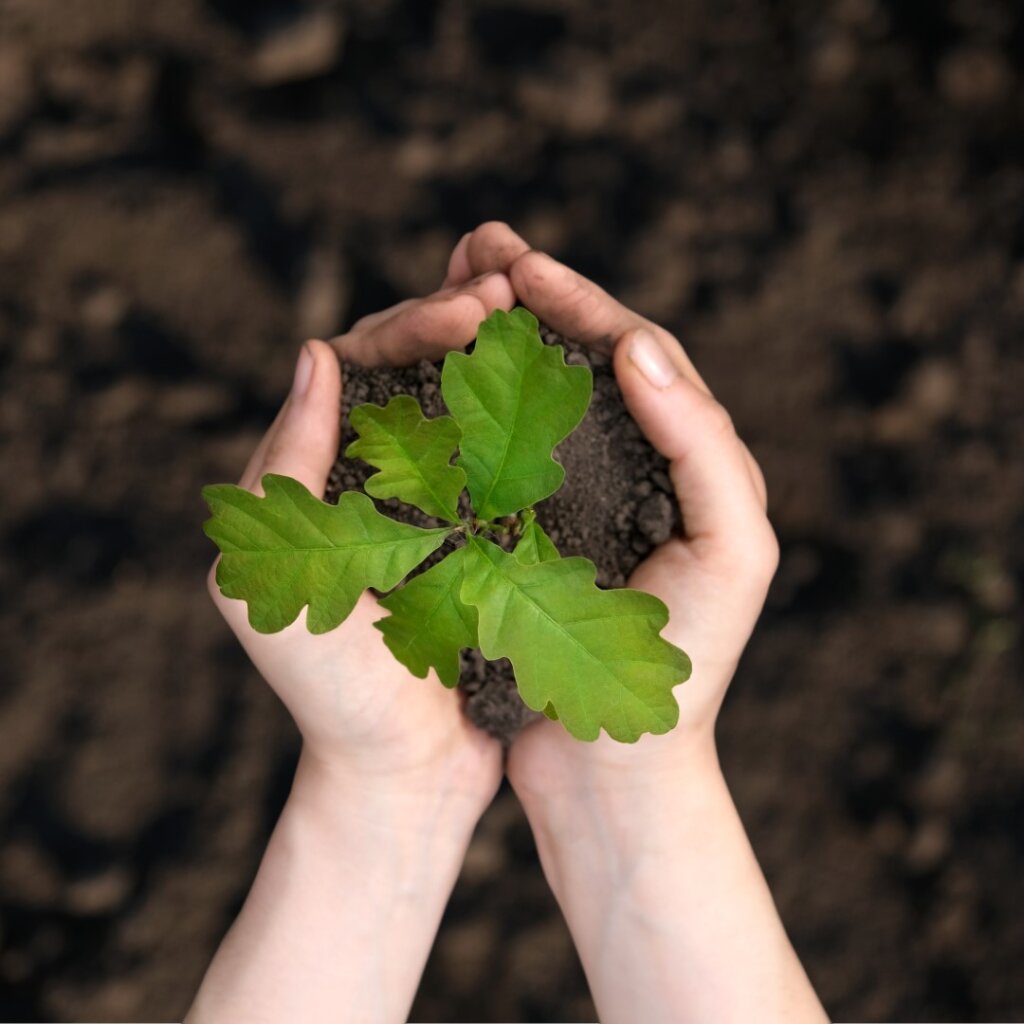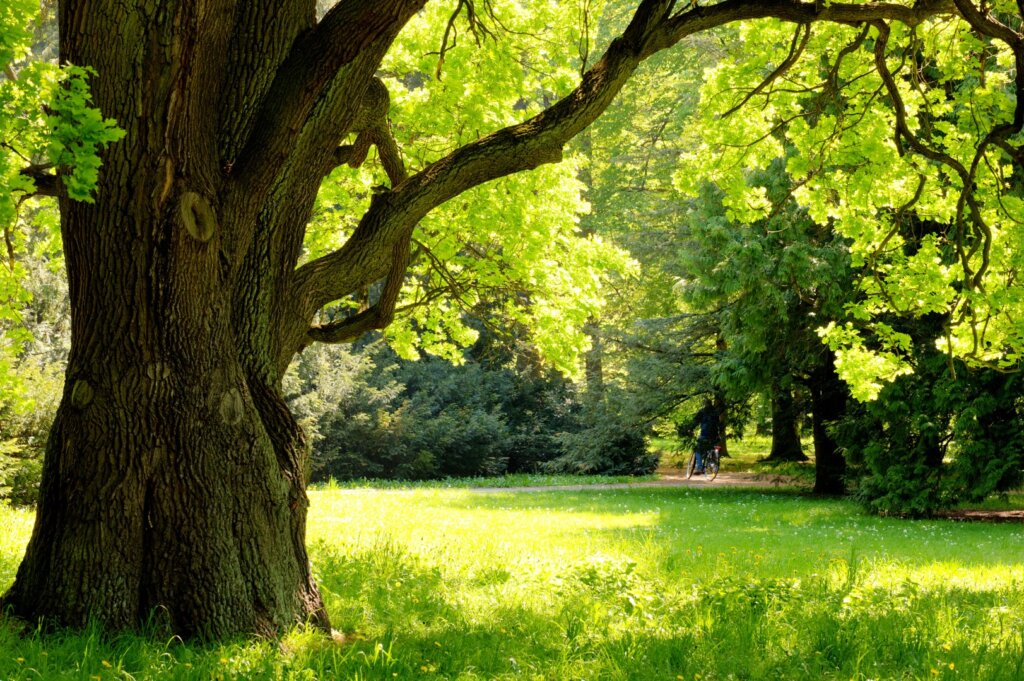
Understanding and Identifying Oak Trees in the Twin Cities
Oak trees are a defining feature of the Twin Cities, known for their strength, beauty, and ecological importance. However, oak trees can face a variety of stressors that contribute to a condition known as oak decline. This decline occurs gradually and is often caused by drought, age, root damage, and pest infestations, which weaken the trees and make them more susceptible to diseases like oak wilt and Armillaria root rot. Addressing these factors is essential for preserving the long-term health of oak trees.
Common Oak Species and Identification
The Twin Cities are home to several oak species, each with distinct characteristics:
- Red Oak: Recognized by its pointed lobes and dark, ridged bark, Red oaks are common in urban areas and turn vibrant red in the fall.
- White Oak: With rounded lobes and lighter, flaky bark, white oaks are often found in parks and residential areas and are valued for their longevity.
- Bur Oak: Known for its thick, deeply furrowed bark and large, rounded leaves, bur oaks thrive in open spaces and are remarkably resilient.
- Northern Pin Oak: Featuring smaller, sharply pointed leaves, northern pin oaks start with smooth bark that becomes more ridged with age.
Oak Tree Growth and Lifespan
Oak trees are known for their longevity and slow growth. Depending on the species, oak trees can live for hundreds of years. Red oaks grow relatively faster than white oaks, but all species benefit from proper care to reach maturity. Bur oaks, for example, are exceptionally hardy and can withstand adverse conditions better than many other tree species. Providing young oaks with the right environment, soil, and care is essential for their long-term health.

Ecological Benefits of Oak Trees
Oak trees are crucial to the local ecosystem in the Twin Cities. They provide shelter and food for a wide variety of wildlife, including birds, squirrels, and insects. Oak trees also help stabilize soil and reduce erosion, particularly in open spaces. The vast root systems of mature oaks store carbon, making them vital players in the fight against climate change. By supporting biodiversity, oak trees are a cornerstone of healthy urban and rural ecosystems.
Caring for Young Oak Trees
When planting young oak trees, choose well-drained soil and ensure the planting location has plenty of room for the tree to grow. Water young oaks regularly, especially in dry conditions, and apply mulch to help retain moisture around the root zone. Protect young oaks from pests like deer and insects using tree guards or fencing until the trees are more established. Avoid over-pruning young oaks, as it may hinder their early growth.

Expert Oak Tree Care Services
Tree Top Climbers provides a comprehensive range of services to maintain the health and beauty of your oak trees, ensuring they remain a valuable part of your landscape.
Tree Health Management
Effective tree health management is the cornerstone of our oak tree care services. From proper watering and mulching to strategic pruning, we ensure your oak trees receive the care they need to thrive. Regular tree health management helps prevent severe issues and maintains your trees’ strength and vitality throughout the year.
Oak Tree Trimming and Pruning
Proper trimming and pruning are essential to maintaining the health and structure of oak trees. The best time to prune and trim oak trees is during the dormant season, typically late fall to early spring. Pruning during this time minimizes the risk of diseases like oak wilt, which can spread through open wounds when trees are pruned in warmer months. Our team applies careful techniques in both oak tree trimming and pruning to enhance tree health and prevent the spread of disease.
Oak Tree Removal
Sometimes, oak trees may need to be removed due to disease, damage, or overcrowding. Tree Top Climbers provides professional oak tree removal services to ensure the safe and efficient removal of oak trees that pose a risk to your property or nearby trees. Whether it’s due to the spread of Oak Wilt, storm damage, or the tree reaching the end of its life, we take great care to remove trees without disrupting your landscape. Our experienced team uses the latest techniques and equipment to safely remove trees of any size while minimizing impact on the surrounding area.
Identifying and Addressing Oak Tree Diseases and Pests
Oak trees in the Twin Cities face several diseases and pests that can compromise their health. Below are the most common threats and how they are managed:
Oak Wilt
Oak wilt is a serious fungal disease that causes leaf browning and can quickly kill oak trees if not treated. While fungicide treatments are sometimes used to manage oak wilt, Tree Top Climbers focuses on tree removal once a fungus has taken hold since management of the fungus becomes increasingly difficult and may not prevent the spread to nearby healthy trees.
Bur Oak Blight
Bur oak blight (BOB) primarily affects bur oaks, causing dark spots on leaves that lead to shriveling. In severe cases, fungicides can be applied to control the disease. At Tree Top Climbers, we emphasize proactive tree health management to strengthen trees and reduce their vulnerability to diseases like bur oak blight.
Anthracnose
Anthracnose is a fungal disease that causes leaf spots, wilting, and defoliation, especially during wet conditions. Fungicide treatments are available to control Anthracnose in severe outbreaks, but our approach focuses on promoting overall tree health and resilience.
Powdery Mildew
Powdery mildew appears as a white, powdery coating on oak leaves, reducing photosynthesis and weakening the tree over time. While fungicide treatments can manage this condition, our methods enhance air circulation and reduce environmental stressors to prevent Powdery Mildew from taking hold.
Armillaria Root Rot
Armillaria root rot is a fungal disease that attacks the roots of oak trees, leading to root decay and tree death. Tree Top Climbers focuses on reducing tree stress and improving root health to manage the effects of Armillaria root rot, although fungicides are sometimes recommended for certain cases.
Two-Lined Chestnut Borer
The Two-Lined Chestnut Borer is an insect pest that infests stressed oak trees, causing dieback and potentially leading to tree mortality. We manage this pest by focusing on strengthening trees to resist infestation and applying insecticide treatments when necessary.
FAQ About Oak Trees
1. How long do oak trees typically live?
Oak trees can live for hundreds of years, with some species, like Bur Oaks, known to reach ages of 200-300 years when properly cared for.
2. What is oak decline, and how can I prevent it?
Oak decline is a gradual weakening of oak trees caused by stressors such as drought, pests, and root damage. Preventing oak decline involves proper tree health management, including watering, mulching, and monitoring for pests.
3. When is the best time to prune an oak tree?
The best time to prune oak trees is during the dormant season, typically late fall to early spring, to prevent spreading diseases like oak wilt.
4. Are oak trees important for local wildlife?
Yes, oak trees provide essential habitat and food for many local wildlife species, including birds, squirrels, and insects.
5. Can I plant an oak tree in a small yard?
While oak trees need ample space to grow, some species, like northern pin oak, can be planted in smaller yards, provided there is enough room for their root systems to expand.
Historical Significance of Oak Trees
Throughout history, oak trees have symbolized strength, endurance, and stability. Oaks have been featured in folklore, mythology, and religious traditions across many cultures. In Minnesota, oak trees have long been a part of the landscape, with many older specimens seen in parks and natural areas that have stood for centuries. These historical giants provide a direct link to the past and underscore the importance of preserving these trees for future generations.

Professionalism and Expertise
At Tree Top Climbers, we take pride in our professionalism and dedication to delivering top-quality tree care services. While we are not certified arborists, our extensive experience and commitment to using proven, scientifically backed methods make us a trusted partner in oak tree care. We understand that effective tree health management requires a blend of knowledge, skill, and proactive care, which we apply to every project.
Our team stays current with the latest tree care techniques, ensuring that we offer the most effective solutions to our clients. We prioritize customer satisfaction by working closely with homeowners to meet their specific needs and address any concerns about their oak trees.
Why Choose Tree Top Climbers
Tree Top Climbers is uniquely positioned to care for oak trees in the Twin Cities due to our deep understanding of the local environment. We recognize the specific challenges that oak trees face in this region and tailor our services to meet these needs. Our focus on tree health management and oak tree care ensures we address these challenges with precision and expertise.
Our results-oriented approach ensures we focus on what works, using our experience and expertise to deliver tangible outcomes. By taking a proactive stance on tree care, we can identify potential problems before they become serious and implement strategies that promote long-term tree health. This approach not only helps maintain the beauty and health of your oak trees but also builds long-term partnerships with our clients, offering ongoing support and advice to keep their trees thriving for years to come.